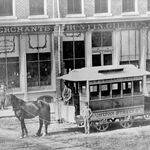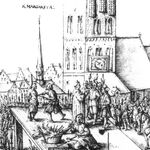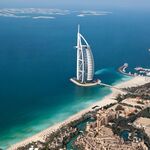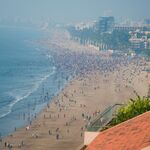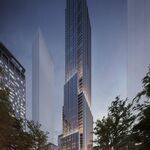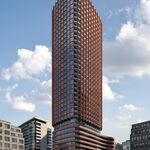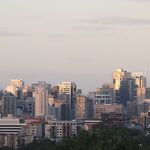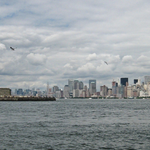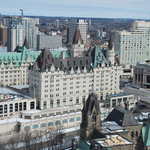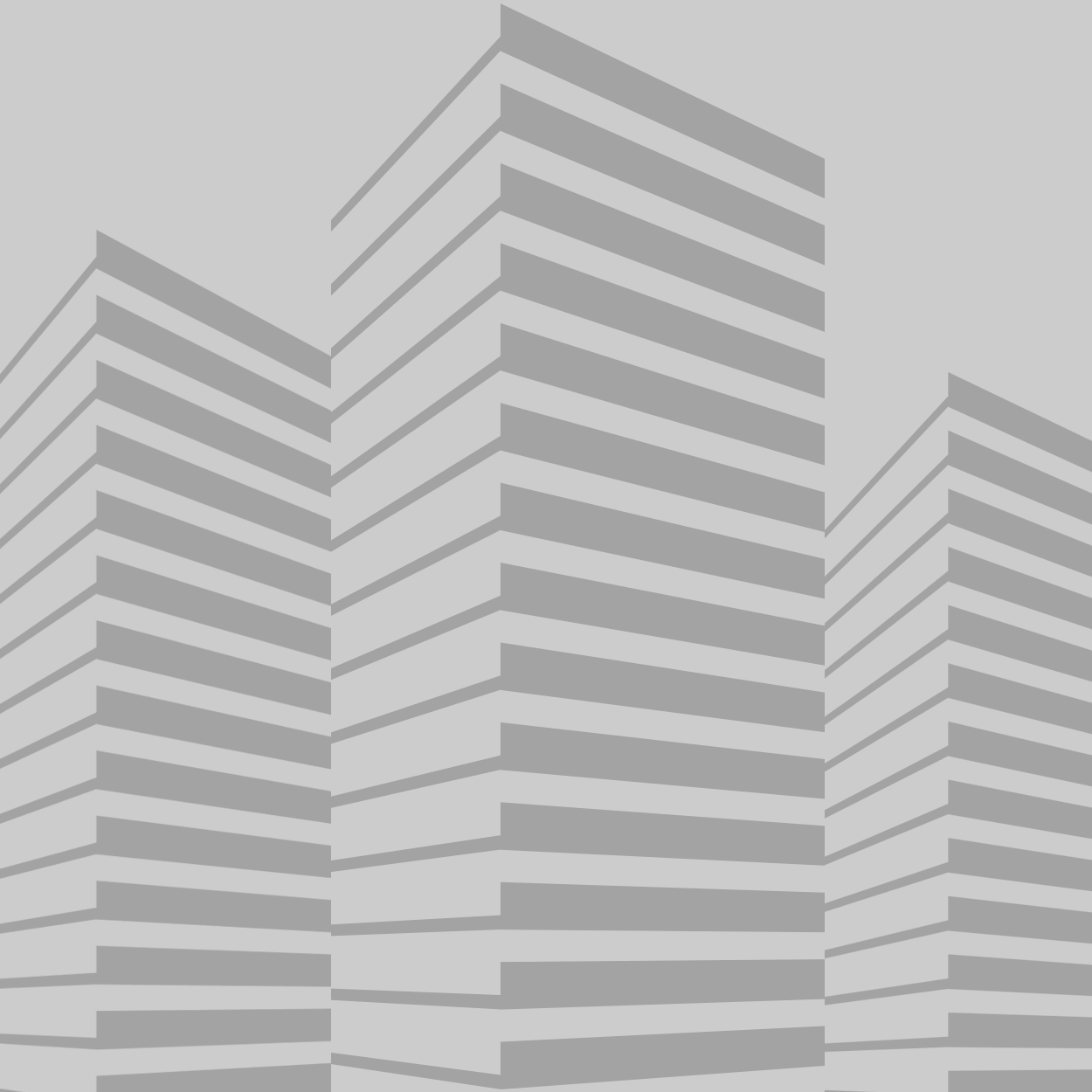While millions around the world will be busy celebrating Christmas on December 25, this year there will be many others in Russia and throughout much of the former USSR who will be marking an anniversary of a much different nature. This year marks the 25th anniversary of the fall of the Soviet Union, followed by that of the birth of the Russian Federation on December 26th. For those old enough to remember the Cold War, which lasted from the end of WWII right up to the fall of the Soviet Union on December 25, 1991, the collapse of the Iron Curtain was a long time coming. The height of tensions between the US and USSR came during the 1950s and '60s, and was defined by a fear of nuclear war and the end of civilization itself. To this end, this week's Throwback Thursday will take a look back at Red Square in Moscow, where the epicentre of the Soviet Union has paradoxically both changed and stayed remarkably the same since the end of the Communist Era.
 Tanks in Red Square during the August Coup, public domain archival image
Tanks in Red Square during the August Coup, public domain archival image
A series of dramatic events unfolded in the months preceding the fall, beginning with the August Coup, in which a small but powerful group of hardline Soviets engaged the military against the Kremlin in an attempt to overthrow Soviet President Mikhail Gorbachev. While ultimately unsuccessful, the three-day coup, brought down by a mixture of pro-Gorbachev and pro-Soviet Boris Yeltsin supporters who stormed the tanks and halted their passage, resulted in a system-wide destabilization that worked to hasten the full collapse of the USSR. In the end, Gorbachev, who had been put under house arrest for the duration of the coup, was largely discredited, while Boris Yeltsin, who had rallied the people to resist and had himself climbed atop a tank to address the crowds, was hailed as a hero and went on to become President of the Russian Federation.
 Boris Yeltsin atop a halted Soviet tank, public domain archival image
Boris Yeltsin atop a halted Soviet tank, public domain archival image
From an architectural standpoint, the Fall of the Soviet Union brought about a series of symbolic demolitions and reconstruction efforts. Citizens across the USSR and its many satellite republics toppled Soviet-era statues, destroyed Soviet government offices and other symbols of the state, while they simultaneously sought to rebuild many of the long-lost edifices of the Russian Empire, including many churches and cathedrals that had been destroyed either during the Russian Civil War, or in its immediate aftermath under orders by Stalin. In Red Square, the public plaza had long served as a staging ground for grand public displays of military might and Soviet power, so the first few years of the Russian Federation saw the high-profile reconstruction of two Soviet-destroyed structures of cultural significance: the Kazan Cathedral and the Iberian Gate and Chapel.
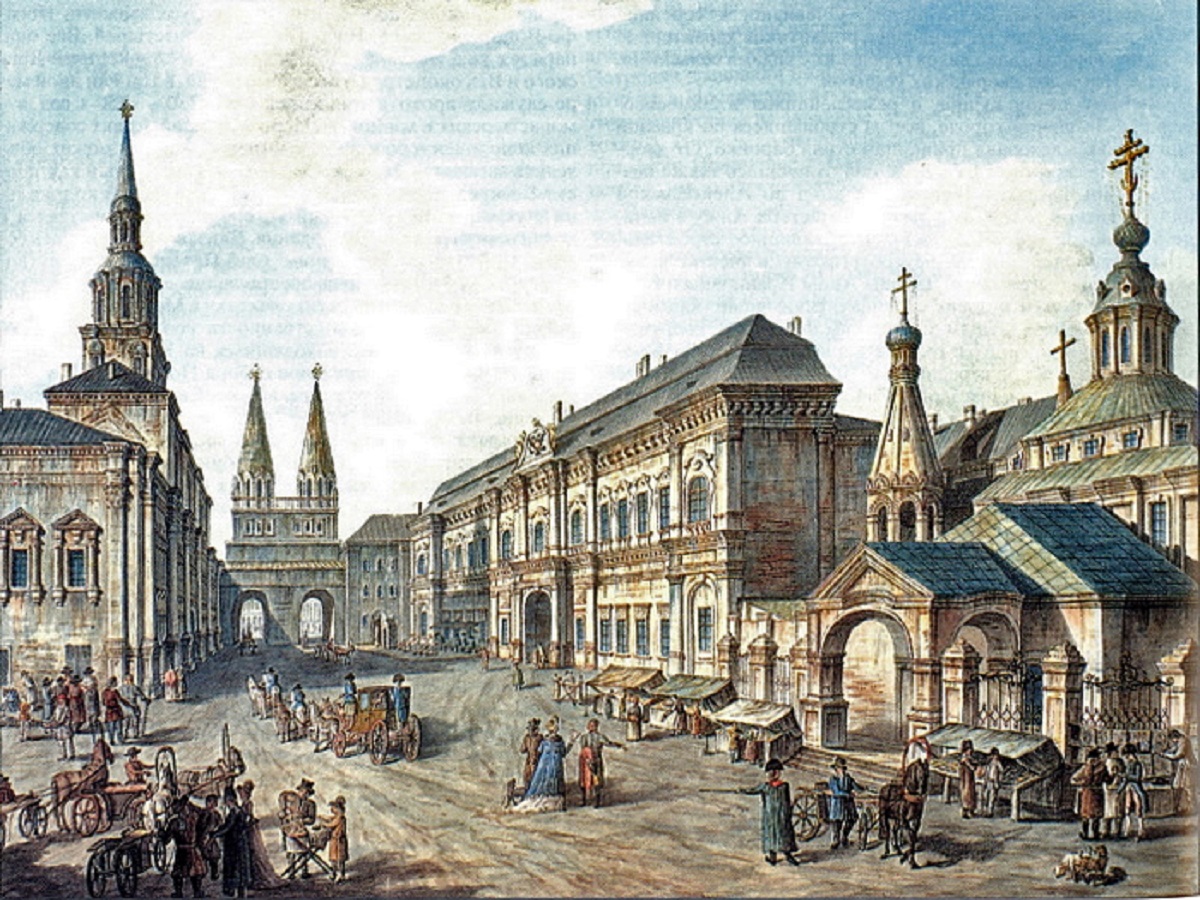 Iberian Gate (left) and Kazan Cathedral (right), 1802, painting by Fyodor Alekseyev
Iberian Gate (left) and Kazan Cathedral (right), 1802, painting by Fyodor Alekseyev
Destroyed under Stalin in the 1930s to make way for the passage of military vehicles and parades, the Kazan Cathedral (1625-1936) was completely rebuilt between 1990 and 1993, with work having actually begun just prior to the collapse, during an era of relative calm. Having held a place of religious and patriotic importance rivaling that of the iconic St. Basil's Cathedral, which itself barely escaped demolition on numerous occasions, the Kazan Cathedral was demolished during the height of Stalin's regime in order to send a strong message to the people that a new world order had arrived. Thus it was with much public reverence and enthusiasm that the historic cathedral was restored to its rightful place in Red Square.
 Kazan Cathedral, image by Alex 'Florstein' Federov via Wikimedia Commons
Kazan Cathedral, image by Alex 'Florstein' Federov via Wikimedia Commons
Following the cathedral's reconsecration in 1993, work began on the reconstruction of the nearby Iberian Gate and Chapel (1680-1931). The complex structure was faithfully rebuilt to its former glory in 1994 and 1995. Featuring twin arches, each topped with an identical turret and peak, the gate functions as a pedestrian passageway connecting Moscow City Hall and the State Historical Museum. At its base, the attached Iveron Chapel, dating to 1669, houses a replica of the miracle-working icon of Panaghia Portaitssa ("Keeper of the Gate"), with an enclosed statue greeting all those who enter Red Square.
 Iberian Gate and Chapel, image by Rex via Wikimedia Commons
Iberian Gate and Chapel, image by Rex via Wikimedia Commons
Today, the UNESCO World Heritage-listed Red Square (a designation it has held since 1991), is host to millions of visitors per year. The dense cultural site contains numerous landmarks including the Kremlin, St. Basil's Cathedral, and Lenin's Mausoleum, in addition to the restored Kazan Cathedral and Iberian Gate and Chapel, which together make Red Square an absolute must-see destination for anyone travelling to Moscow. Defined today more as a place of peace and a gathering point for tourists, a recent return of military parades and patriotic demonstrations, in particular, those in remembrance of the nation's victory over Nazi Germany in WWII, have brought a sombre reminder to the site of its complicated past and place in the hearts and minds of the Russian people.
 Red Square restored, viewed from St. Basil's Cathedral, image by Chirstophe Meneboeuf via Wikimedia Commons
Red Square restored, viewed from St. Basil's Cathedral, image by Chirstophe Meneboeuf via Wikimedia Commons
Below, for bonus points, you can watch the ultimate USSR throwback, courtesy of some of the former Soviet Union's best-known pop stars and television personalities. Put together in late 1991 as a largely tongue-in-cheek retrospective, the video captures the best and the brightest of Soviet stardom giving it their all in a rendition of the Soviet National Anthem:
Have an idea for a future Throwback Thursday? Let us know by leaving a comment below!

 5.4K
5.4K 












